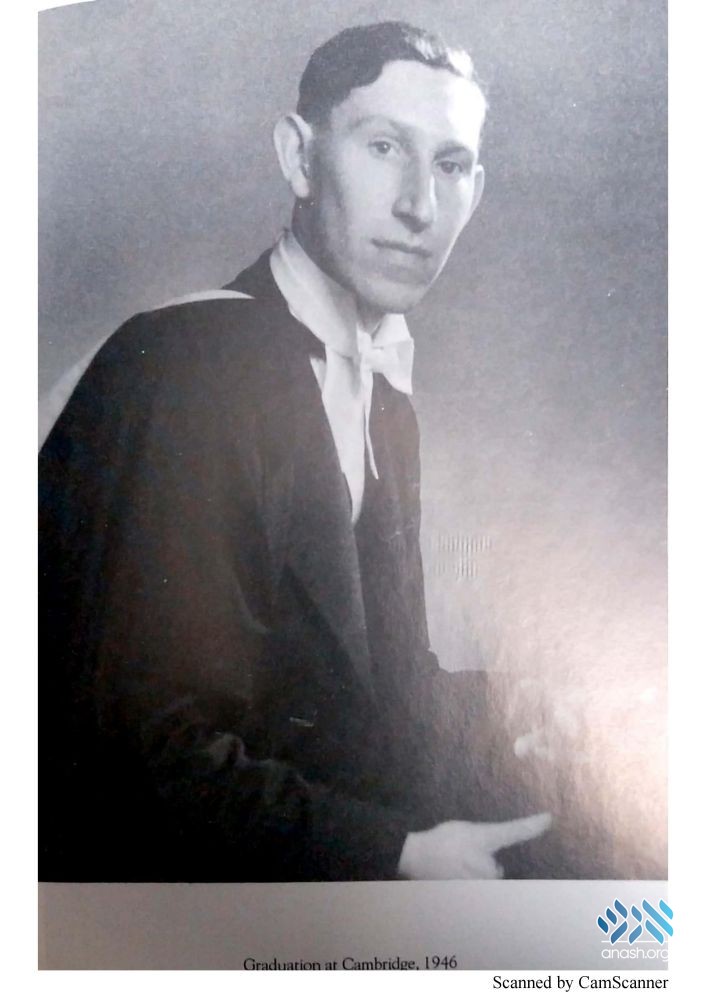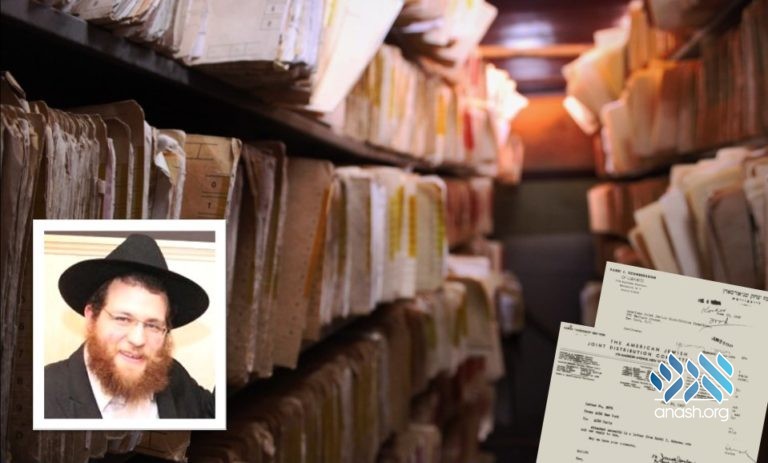ג׳ שבט ה׳תש״פ | January 28, 2020
How the Rebbe Persuaded a Scientist to Argue Torah’s Case
The Rebbe and the AOJS: Chabad historian Rabbi Nochum Zajac shares how the Rebbe influenced the scientific works of Professor Cyril Domb.

The Rebbe and the AOJS: Chabad historian Rabbi Nochum Zajac shares how the Rebbe influenced the scientific works of Professor Cyril (Yechiel) Domb.
By Rabbi Nochum Zajac for Anash.org
In last week’s article, we learned about the Rebbe’s unique relationship with cancer researcher Dr. Solomon Ullman. It has already been mentioned that the Rebbe had many fascinating encounters with several of the AOJS’s prominent members. Professor Cyril (Yechiel) Domb (5681-5772) was one such member.
Dr. Cyril Domb was born in North London, England, into a chassidic family. His grandparents were deeply religious, and he was deeply inspired by them. As he grew up, he retained this deep religious feeling, was meticulous in his observance of the Mitzvos — which always took precedence over activities for professional advancement — and spent much of his free time devoted to the study of Talmud (including attending a daily Daf Yomi Shiur).
Dr. Domb enjoyed a long and fruitful career in the study of theoretical physics and statistical mechanics, during which he lectured at prominent colleges in England, Israel and America, including Oxford and Cambridge Universities. Shortly before making aliyah to Israel, he was elected a Fellow of the Royal Society.
After encountering AOJS members during a Sabbatical year at the University of Maryland, he helped found a chapter in London.
In 1971, Dr. Domb became the general editor of an AOJS-sponsored book series aimed at presenting material to be used for Jewish education. He went on publish and contribute to several works revolving around the relationship between Torah and science.
The Rebbe not only maintained a relationship with Dr. Domb, but he also prodded along much of his work in the realm of Torah and science.
Dr. Domb’s first interaction with the Rebbe came about through Rabbi Dr. Kopul Rosen, a prominent and dynamic Rabbi and educator who had greatly influenced the professor in his formative years. Though descended from chassidim, Rabbi Rosen was eventually molded by his years of learning in Litvishe yeshivas. With time, however, he became drawn to Chabad. He maintained relationships with chassidim such as Reb Bentzion Shemtov and Reb Sender Nemtzov, and kept a correspondence with the Rebbe.
Towards the end of his life, after falling ill with leukemia, Rabbi Rosen traveled to New York to visit the Rebbe, an experience that left a profound impression on him. At the time, he shared his feelings with Dr. Domb and encouraged him to write to the Rebbe about matters pertaining to Torah U’Mada (Torah and science).
A few years later, Dr. Domb produced a book on the life on Rabbi Rosen. In this book, he gives his readers a peek into this period .
“For the first time in his life, Kopul felt the need to consult someone about his personal affairs, and he chose the Lubavitcher Rebbe, in New York… he flew to New York to spend several hours with the Rebbe, on two different occasions, and the inspiration he derived was clearly the dominating influence during the last days of his life.”
Around that time, the Jewish Chronicle in London reached out to Dr. Domb and asked him to write an article on the issue of Judaism and how it relates to the Big Bang Theory. At the the time. a debate was raging between proponents of the “Big Bang” and the “Steady State” theory, which opines that the world continuously expands since the beginning of time (parenthetically it has since been scientifically discredited.).
It was generally assumed that religious thinkers would support the “Big Bang” over “Steady State” — as proponents of “Steady State” did not attribute any starting point to the universe.
Up until that time, Professor Domb had lectured privately on issues that were related to science and religion; this would be his first time publicly contributing to the discussion.
“My reply was to say unequivocally that Torah thinking could live with either cosmology, and I proceeded to explain the reason in an article that attracted wide attention. This was the first time in which I entered a public discussion of this nature, although I had previously engaged in discussions largely with religious groups,” he wrote.
The Rebbe read the article and reached out to him, encouraging him to get more involved in the issue about which he had written, something which had vexed many Jewish intellectuals. They considered the worlds of Yiddishkeit and science to be unbridgeable.
In a lengthy letter, the Rebbe urged the professor to devote time to expound on his writings about Yiddishkeit and its relationship with science. In a second letter, the Rebbe explained that many Jews were rejecting Yiddishkeit as a result of various scientific theories and how they relate to the teachings of Torah. Many posed the question: ‘How can a rational scientist be a committed Jew?’ It was therefore incumbent on individuals like Dr. Domb to articulate the answer to those asking.
Professor Domb answered the Rebbe’s letter, but was noncommittal in his response. The Rebbe sent him another two letters in which he strongly reinforced his view on the matter. The letters contained practical suggestion as to how he could organize and package his arguments for maximum effect. In addition, a lively discussion went back and forth through these letters on the theory of evolution and the 6 days of creation.
Decades later, Dr. Domb reflected: “I felt honored that the Rebbe took the initiative to write to me, and I benefited greatly from all my subsequent correspondence with the Rebbe.”
These letters gave him the push he needed, and he began spending more time on the above-mentioned matters. It was then that he launched the British branch of the AOJS. The works he wrote at that time were considered classics and were widely distributed.
To read Rabbi Zajac’s full article complete with sources, click here. Readers who can shed additional light on the content of this article are encouraged to do so in the comments, or by emailing [email protected].




We appreciate your feedback. If you have any additional information to contribute to this article, it will be added below.